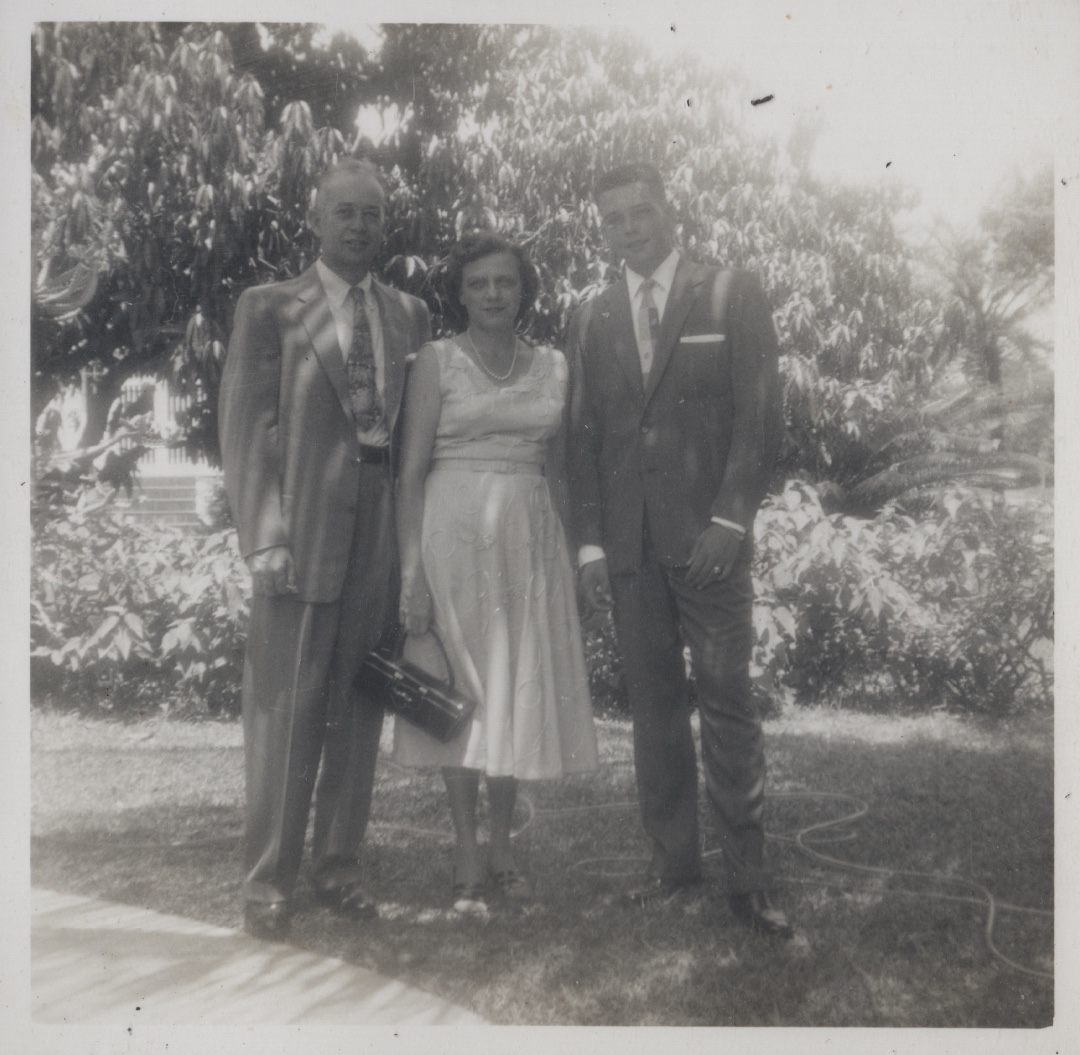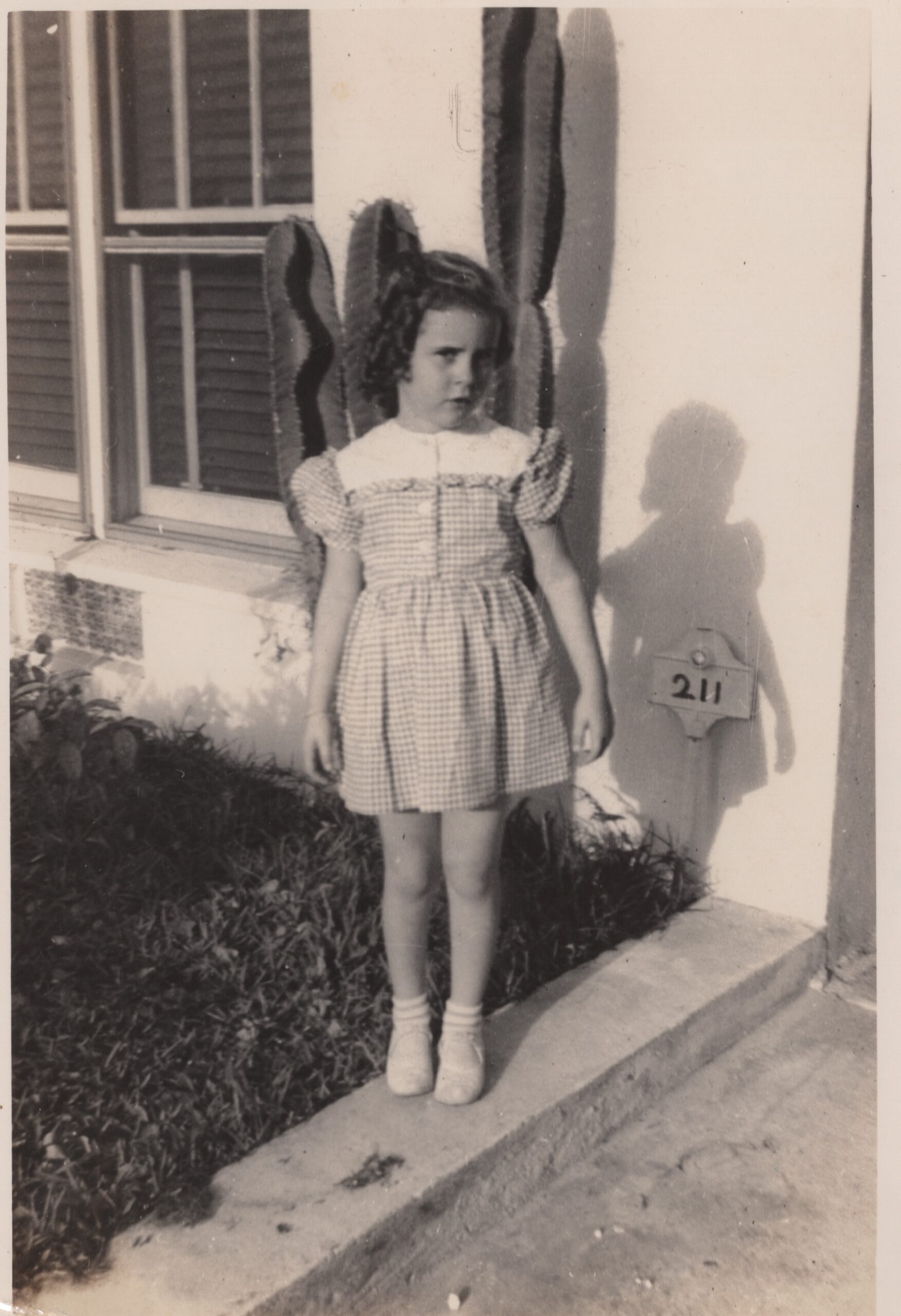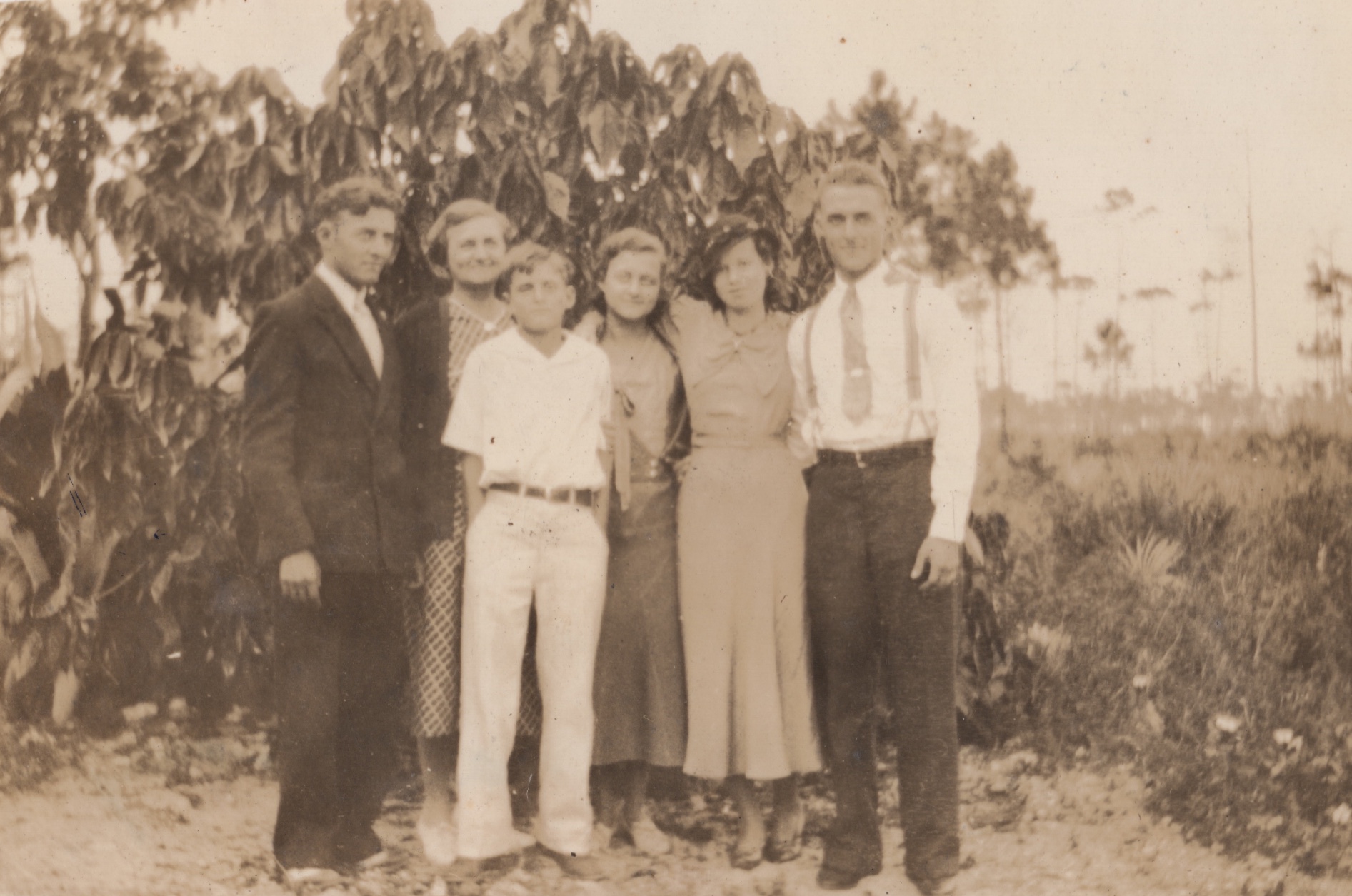As Miami turns 125, a young woman pays homage to her ancestral hometown

July 14, 2021 | By Sophie Feinberg | Photo illustration by Apoorva Thapa
I know a Miami that few know. A secret Miami. A city kept hidden from many who live here and certainly, the visitors who come for the sunshine, sand and shimmering skyline. And the nightlife that’s as hot as the city’s sweltering days and swills of cafecitos.
My family grew alongside this city; four generations who called it home despite the unforgiving weather and the annual threat of killer hurricanes.
As a child, I didn’t get Miami’s lure. I longed for a snow day amid a heat that enveloped me like a cloak turning my skin pink and freckled. I thought the traffic was endless, and mosquitoes just wouldn’t leave me alone. But like a rash or the no-see-um bites that polka-dotted my legs after a day by the ocean, Miami had to grow on them and on me.
But then something changed.
In my Miami, I realized streets here stand as landmarks of my family’s story. The park where I learned to ride a bike. The school where my grandma taught. The building where my great-grandparents owned a flower shop. The home where my mom grew up.
Florida is not known for retaining the native-born. Data from 2019 estimated only about 36% of Floridians are born in the state, according to the Census. But for whatever reason, my family decided to stay, and I am now a rare fourth-generation Miamian wandering the same streets where the swampy Everglades once flowed and my grandparents played as children.
I am 23 years old, and my Miami obviously lacks the perspective of my grandparents who have lived here for more than eight decades. My Miami is also that of a privileged person; I am white and grew up wanting for nothing. I know that my experience has been vastly different than many of the people of color who live here — more than 16% of Miami-Dade County’s residents are Black and nearly 72% are Latinos who have built a culture here that has become a hallmark of what my city is today.
Demographics are only one aspect of the massive change that has altered Miami at lightning speed. Even in my two decades here, I’ve watched my Miami change and am scrambling to document it before I forget. Before the life I knew is gone.
It didn’t dawn on me in my younger years to appreciate these stories or collect souvenirs of my Miami, a city that turns 125 years old this month. It was only later, when I left home for the University of Florida, that I could look back and see why Miami was nicknamed the Magic City.
Watershed
My great-grandparents arrived not long after the city was established in 1896. They came from snowy New England and across the border in Georgia in the 1920s. They were why I grew up with sand between my toes.


Julia Tuttle (left), circa 1890, and Henry Flagler, circa 1900. (State Archives of Florida)
On a field trip in middle school, I visited Bayfront Park and gathered with my science class in a semicircle around a statue of entrepreneur Julia Tuttle as a sea breeze whipped our faces. Tuttle saw the promise in the swampy land when she arrived in 1891. For hundreds of years, the Miami riverfront where she once lived was inhabited by the people of the Calusa or Tequesta tribes. Their numbers deteriorated by 1800 after enslavement, disease and war with Spanish settlers.
Rumor has it that Tuttle, known as the mother of Miami and the only woman to ever be credited with founding an American city, mailed railroad mogul Henry Flagler a pristine orange blossom as evidence of Miami’s hardiness during The Great Freeze of 1894-95. It worked. Flagler expanded his tracks south through the Florida peninsula, eventually to the Keys.
At the start of the 20th century, fewer than 2,000 people had settled in Miami. But then came massive growth. My ancestors were among the newbies who called Miami home, enticed by the train and land boom.

My family tree on my maternal side. (Apoorva Thapa/Atrium)
As a part of that population boom, my great-great-grandparents Charles Sr. and Lillian, my grandma Judy’s grandparents, came down from Georgia to South Florida with their son Lamar to start a tomato farm. On what’s now known as Franjo Road in the unincorporated town of Perrine, my great-grandpa Charles Jr. came into the world. That was in 1914, four years before Jackson Memorial Hospital was built.



My great-great grandparents Charles Sr. and Lillian’s first home (left) on Franjo Road. In the center, Charles Sr. sits in an undated photograph, likely pre-1914. On the right, Lillian in an undated photograph. Franjo was part of what’s known as Perrine, then a part of unincorporated Miami-Dade, south of Miami but north of Homestead. Grandma has few memories of this set of grandparents, as they passed away when she was young.
By 1920, Miami grew to a population of nearly 30,000. My great-grandma Dot, her five siblings and their parents Jack and Bridget had moved south from Maine in the 1920s. A rough hurricane season brought a demand for construction jobs, and Jack was a foreman.
Great-grandpa Charles Jr. met great-grandma Dot sometime around the early 1930s and married in 1933.


My great-great grandparents’, Jack and Bridget, first home (left) after they moved down from the Northeast. Grandma can’t exactly recall where the home was. But she remembers their subsequent move to Sweetwater where they started the farm and she got her pony, Beauty.
My grandpa Mike’s family was also in Georgia, where my great-grandfather Kermit and his father William were born. The family’s turpentine business turned unprofitable with the advent of the war. They arrived in the Sunshine State, first settling near Jacksonville and then moving on to Lake Wales where my great-grandfather picked fruit in orange groves. My great-grandmother Peggy arrived in Florida from New York after becoming orphaned at a young age. The couple moved from Polk County to Miami for work after getting married in 1932. By then, Miami’s population had grown to more than 110,000.

My grandpa Mike —I call him Papa— and his parents Kermit and Peggy in 1955 at his junior high graduation. Papa recalls his dad’s long hours working as a transit mechanic on Miami’s buses and at a used car lot. His mom managed the home and was usually found with a book. He fondly recalls weekly trips to the library.
In 1940, the year my grandparents were born, both Grandma and Papa’s families were settled in Miami-Dade. Population: 172,000.


Papa in front of his childhood home circa 1942 (left) and 1954. In his school days, he would ride his red and white flyer to school. In those days, school wouldn’t be canceled when it was too hot but too cold. Miami school buildings had AC but didn’t have heaters. He still has the covered wagon. It sits on a bookshelf in his TV room.
Papa grew up in a house near Coral Way. It had palm trees and cacti in the front yard and a variety of fruit trees in the back: avocado, mango and a mammoth citrus tree that offered multiple citrus species grafted to one trunk.
His Miami was canoeing with the Boy Scouts and later, the Eagle Scouts. Big football games at the Orange Bowl, now demolished and home to the Marlins stadium. Time on the water with the Coconut Grove Sailing Club. Remnants of his Miami are nestled around his house: his Boy Scout sash. An oar coat rack. Portraits he took on outdoor excursions.

Grandma in front of her childhood home circa 1945 on her first day of school. She is wearing a dress made by her mom who also sold her creations to a local shop selling crafts, Puckersnatch. Her hair was curly, but her mom liked to form it into ringlets.
Grandma grew up mostly on 19th Street, a quintessential Florida childhood of playing outside, cooling off with a drink from the hose, before everything was bottled in plastic and draining the state’s natural springs. She had fruit trees too: grapefruit, oranges and guava.
Her Miami was collecting snow princesses at Burdines department store, stopping to visit the gorilla Gargantua at the Ringling Brothers and Barnum and Bailey Circus in what’s now a Sears parking lot. It was riding in the Orange Bowl Parade floats. Posing in a photoshoot for Pan American, where my great-grandpa worked before the flower shop, when it developed a spot on 36th Street, where Miami International Airport is today.


Throughout her childhood, Mom spent many days by the water. She loved shelling, as she is pictured doing in an undated childhood photo (left). In high school, one of her hobbies included sailing.
My mom grew up on Biscayne Bay in the 1960s and 1970s. By then, the population of Miami numbered more than 290,000.
Her childhood was spent within the bounds of Coconut Grove where my grandparents were both teachers. The private school Papa worked at was still a boarding school and needed someone on campus, so they lived there in a cottage made of Dade County Pine. The football field butted up to the bay that became my mom’s backyard, a place where she played in the mangroves that jutted up from the water and sailed in the mosaic waves.
Her Miami was building sandcastles on Key Biscayne and visiting the Crandon Park Zoo. It was walking down Main Highway through the Coconut Grove Art Festival, steps from her front door. Biking to Peacock Park for a frozen lemonade from A.C.’s Icees. Going for drives with her grandparents to look at the vast changes taking place. They drove to Matheson Hammock or to Lincoln Road to get my mom her annual pair of gold sandals.
My mom and dad, a Florida transplant from South Carolina, met at UF and then found themselves back in Miami. I was born in 1998. My brother Jake, two years later. Population: about 2 million.
Flow
My Miami is a thread connecting me to my family.

From left to right, Grandma thinks it’s my great-great grandfather Charles Sr. or maybe his son Lamar, my great-great grandmother Lillian, my great-great uncle John, my great-great aunt Ruth, my great-grandma Dot and my great-grandpa Charles Jr. Grandma doesn’t recall learning the photo’s origins. Circa 1935.
In my Miami, there’s the kismet of learning to swim at the same pool, just as my grandma did decades before: Venetian Pool, formed by limestone mining that built Coral Gables.
I remember the pool feeling bottomless during my swimming lessons. Even in the sweltering summer, my lips would be blue because the pool was filled each morning with fresh, chilly spring water.


Venetian Pool in 1924 (left). The trees in the background are now the neighborhoods of Coral Gables. (State Archives of Florida / Fishbaugh) Venetian Pool in 2021. (Sophie Feinberg/Atrium)
My Miami was attending summer camps on the water, in some years on the same mangrove-laced bay by which my mom grew up, or at the camp my grandparents founded. A small motorboat would pull campers through Biscayne Bay on an inflatable hot dog. Or set out in canoes, avoiding the iguanas that would leap from the sea walls. Another day it was archery or camp crafts, my backpack holding wet swimsuits and a growing number of lanyards.
Other years, camp was in Key Biscayne, not far from the elementary school where my mom taught, at a nature center named for Marjory Stoneman Douglas. There, I would dance through the sea grass twirling a net from which seahorses, pea fish and sea stars would emerge.
Sometimes we would make the walk across Crandon Park to visit the remnants of Miami’s original zoo that my mom used to visit in her childhood. One of my favorite days at camp was heading to the Cape Florida Lighthouse, the oldest structure in Miami. Though I have respect for my lack of wings and dislike heights, I would will my wobbly knees up a staircase that I could swear was wobbling too.


Cape Florida Lighthouse circa 1920. (State Archives of Florida/Fishbaugh) Cape Florida Lighthouse in 2021. (Sophie Feinberg/Atrium)
I can’t speak for the cocaine or the parties that proliferated on Miami-themed television or music that contributed to the city’s present-day reputation.
My Miami is quiet. Serene. We spend Thanksgivings on the beach and eat turkey sandwiches. We walk among palm trees and bromeliads, unphased by the lizards that scurry across the sidewalk, making our stroll a game of jump rope. And bright green parrots that squawk overhead. My Miami means home.
It means being proud of holding the honor of being entrusted with the cafecito delivery at school, bringing the tiny white cups of steaming sustenance to teachers in need.
In mango season, it means being proud of winning the battle with squirrels for the best fruit.
It means plywood shutters covering my bedroom window ahead of a storm and consuming the stock of batteries powering my emergency flashlight to read in the cave created by hurricane prep.



Family photos usually meant heading over to Matheson Hammock before dusk. Circa 2004, 2008 and 2010.
For three and four generations, Miami is all my family has known. In its good times and bad times, Miami had enough of a pull to make my family stay put. But in three generations from now, will we still be here?
Ebb
Miami’s population boom is over. Though one of the largest metro cities in the United States, it doesn’t have the same growth rate it saw in the past.
A playground for developers and diplomats, Miami continues to build. Even as temperatures continue to rise. Even as sea level creeps up inch by inch. Even as growing risks of hurricanes threaten to raze the city.
I grew with Miami. As pavement expanded across the once swampy expanse travelable by canoe, it was considered a success. But now the black asphalt is a frying pan cooking the community.
The small-town feel my mom and grandparents remember is long gone. The building where the flower shop stood is demolished, now self-storage. The courthouse, once the tallest building Downtown and one of the tallest in the South, looks like a doll house next to towering business buildings and condos.
The enclaves, streets and beaches of my childhood and generations before me are changing. Among evolving demographics, development and extreme weather, Miami today would be unrecognizable to my great-great grandparents.



Me (left), under 2 years old, at Matheson Hammock Park, not too sure of the sand. Beach days were a staple of my Miami summers that seem to have faded in the chaos of growing up. Grandma (foreground), her mom Dot and childhood best friend Babs at Matheson Hammock in 1944 (top right). Her dad’s cousin worked as a groundskeeper at the park. She and Sandra, his daughter, would walk around the quiet park at night, where no one was allowed after sunset. Me, present day, at Matheson Hammock.
But there’s a certain buzz in the air here. It’s not just the cicadas or tourists tipsy after brunch. It’s the people.
Some people, like those in my family who make Miami home, take root and don’t seem to want to let go. Yes — Miami is imperfect. It’s had — and continues to have — more than its share of problems and inequities.
Yet Miami is like a sibling to its residents. We can pick on it, but we are quick to defend it from bullies who dare start a spat. People stack like mangroves and protect the city people love to hate.
Summers are so often nightmarish. Doing anything becomes a race from the car’s AC to an establishment’s front door. A race to wipe the sweat from your brow before it burns your eyes. A race against the looming thunderstorm in the skies.
“We live where you vacation,” some quip, even as hurricanes barrel through the Caribbean with our coastal city as a target. Amid sandbags and shutters, Miamians still celebrate and stock up on booze.
Even when the air is so thick you feel like you’re swimming, “Hey, we can go in the pool or to the beach year-round.”
Miami ranks high in a lot of things. Termites. Traffic. Fraud. Income disparities. In being the worst, apparently.
“It’s crazy.” But it’s our crazy.
Heat does things to people. At least, that’s my theory. Maybe it’s this heat that has warped me and my family before me. That made them seek this out and never leave. Maybe I’m naive to think there’s a chance Miami can be preserved even as climate researchers and historians point to the dangers of climbing waters that make Miami a destination. Maybe I’m crazy, selfish even, for wanting it to be saved. For thinking its problems can be solved.
It’ll be OK. At least, that’s what I keep telling myself. So I can sleep at night without imagining everything I loved so much about my childhood becoming a fantasy. An Atlantis.
There’s a fix. There has to be. And fast. A way to keep the story going. But time isn’t slowing down and neither are the changing tides shaping this new Miami, razing historic neighborhoods.
It’s a grim reality. But as I captured my Miami, I had a realization. Maybe my Miami isn’t so much a place as a feeling. Home.
1 thought on “Magic City”
Comments are closed.